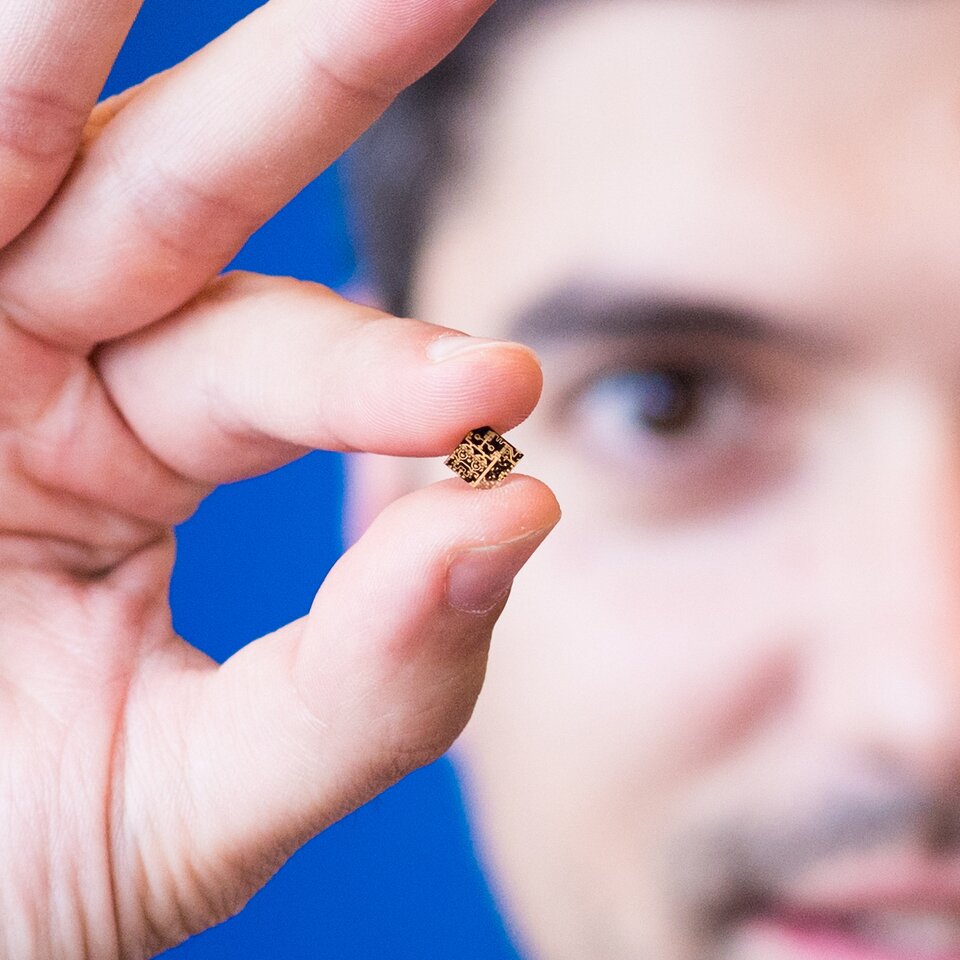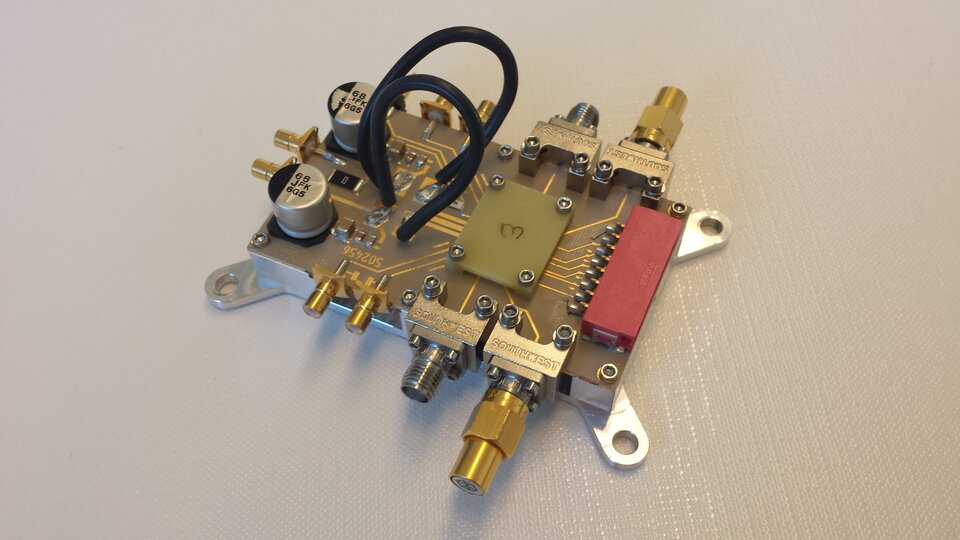Single GaN chip HPA/LNA for Radar Applications
| Programme: | TRP Workplan | Achieved TRL: | 4 |
| Reference: | T106-304ET | Closure: | 2016 |
| Contractor(s): | TNO (NL), UMS (FR), Airbus Defense and Space (DE) | ||
Classical Transmit/Receive modules for Radar applications contain individual circuits for the High Power Amplifier, the Low Noise Amplifier and the Switch/Isolator. With the advent of GaN technology, all these functions can be integrated into one chip while achieving an increased amount of RF power and efficiency at the same time.
Objectives
The objective was to design, manufacture and test a single chip GaN Front-End comprising a High Power Amplifier, a Low Noise Amplifier and a High Power Transmit/Receive Switch for its application in future Sentinel-1 missions. The idea behind was to improve the current Transmit/Receive modules used in Sentinel-1 by achieving a single chip solution with enhanced electrical performances and reducing the size and mass of the active antenna on-board the satellite.

Achievements and status
A state-of-the-art GaN single chip of 6 x 6 mm was successfully designed, manufactured and tested. The electrical test results confirmed the ones obtained by simulations, validating the models used and increasing the confidence for future production batches. Some key achievements:
- 3x more of RF output power with improved efficiency
- 40% less size due to lack of isolator and single chip
- Similar Noise Figure values than S-1 for the receive chain
- Improved Instrument sensitivity
- Possibility to increase receive window (swath width) or additional calibration window within same Pulse Repetition Interval thanks to a shorter transmit pulse with same average RF power
- Extension of orbit duty cycle thanks to increased temperature operation of GaN
- Reduction of power harness thanks to higher voltage operation of GaN for same average DC power

Benefits
The added value of this technology and concept for Sentinel-1 are the potential benefits at system level summarized above.
The concept can be applied to any frequency band, making it suitable to most of the public or commercial radar applications in space.
Next steps
A GSTP activity has started for manufacturing and testing a complete transmit/receive module for Sentinel-1 type of mission, by using a different GaN process. The concept could be applied to Sentinel-1 follow on mission after C and D satellites are successfully commissioned.


